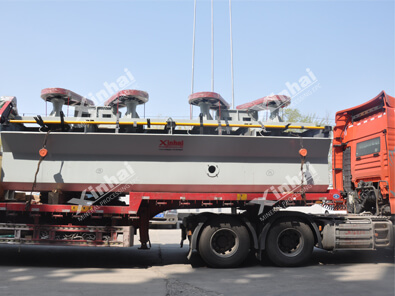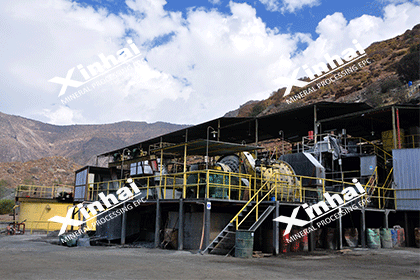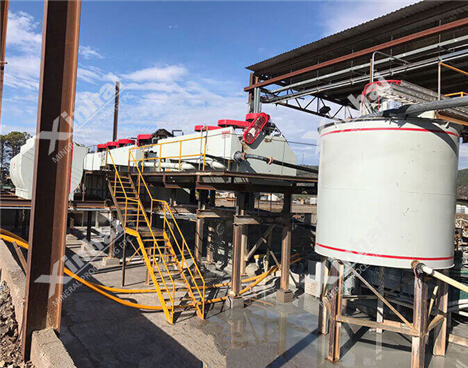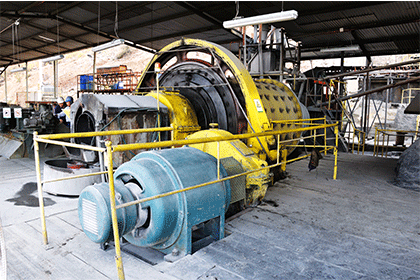Ultimate Guide of Extraction of Copper from Copper Pyrite
 Shirley
Shirley
 Aug 31, 2022
Aug 31, 2022
 3013
3013
If you want to know more details about equipment, solutions, etc, please click the button below for free consultation, or leave your requirements!
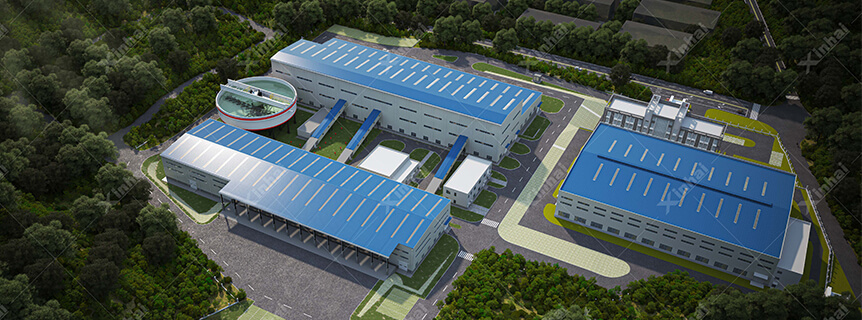
In the copper-bearing pyrites, copper ore is also a metal with recycling value, mainly in the form of chalcopyrite and chalmersite, with a relatively fine grain size, and minerals larger than 74 micron account for 2% to 13%. Copper in copper-bearing pyrite is often difficult to separate. Before, we discussed the complete guide to copper ore processing solutions and equipment. In this article, we will explore how to extract copper in pyrite based on the difficulties in extracting copper-bearing pyrite.
01 Difficulties in the Extraction of Copper in Pyrite
BackThe main difficulty in sorting copper-bearing pyrite is that this type of ore has high sulfur content and is very easy to oxidize.
During the oxidation process, the primary chalcopyrite in the ore may form three types of substances: secondary copper sulfide (chalcocite and digenite), water-soluble copper (chalcanthite and pisanite), and malachite and azurite. Water-soluble copper can form a colloid of basic carbonate and copper hydroxide in water, which covers the surface of other copper minerals, causing the recovery of copper minerals to be inhibited.
The copper ions dissolved in the water will also activate the pyrite, causing a large amount of iron ions to be produced in the slurry, and the flotation of copper minerals will be further affected. Therefore, in the separation of copper-containing pyrite, the focus is to avoid oxidation and reduce the inhibitory effect of harmful ions in the slurry on copper flotation.
In the following, we will look at the two aspects of the grinding stage and the separation stage to see what kind of method is used in the actual production to separate the copper-bearing pyrite to solve the above problems.
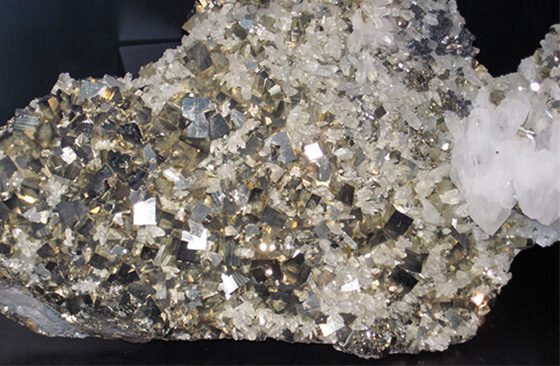
(Copper-bearing pyrite ore)
02 Ways to Extract Copper from Copper Pyrite
Back1# The Grinding Stage of Extracting Copper from Copper Pyrite
In the grinding stage of sulfide ore, wet grinding is usually used. The reaction in this process has a great influence on the effect of the collector and the degree of oxidation of the copper mineral in the ore, thereby affecting the flotation separation.
First of all, the choice of grinding media has a relatively great impact on the beneficiation index. Compared with low-carbon steel balls, chromium steel balls as a grinding medium can avoid the oxidation of copper minerals, thus obtaining a higher flotation recovery rate.
Therefore, it is a more suitable to use chromium steel balls as the grinding medium of copper-containing pyrite. In addition, the grinding stage of copper-containing pyrite can also adopt the method of adding calcium carbonate or calcium oxide, as well as the method of adding sodium hydrosulfide or sodium sulfide, which can reduce the oxidation of copper-containing pyrite and obtain better flotation indicators.
In the beneficiation plant, coarse grinding can also be used, and the fineness of grinding should be controlled between 65% and 75% to avoid oxidation caused by too fine particle size.
2# The Separating Stage of Extracting Copper from Copper Pyrite
In the separating stage of copper-bearing pyrite, the pH value of the pulp must be controlled first. Under alkaline conditions, the iron ions in the slurry form iron hydroxide and accumulate on the surface of the pyrite, which improves the hydrophilicity of the pyrite and inhibits its floatability, resulting in better copper flotation conditions.
Generally, we can use calcium hydroxide to adjust the pulp to between 10 and 11, which is used as the pulp environment for flotation of copper. For pyrite that has been activated, we can use inhibitors to inhibit. The inhibitors that can be selected include: citric acid, lactic acid, EDTA, ethylenediamine, thiourea, ammonia, etc. These substances affect the iron and copper ions in the pulp and produce complexation, thereby inhibiting pyrite, so we can use xanthate to capture copper minerals then.
In the separation process, due to the dissemination relationship between copper minerals and pyrite and the fine dissemination particle size, coarse grinding and roughing often fail to obtain high concentrate grades. Therefore, in production, the method of stage grinding stage separation is often used to separate copper minerals in pyrite.
In addition to improving the grade of the concentrate, the stage grinding also has the effect of reagent removal, which can reduce the influence of the previous separation reagent on the next stage, so that the next stage separation process can be carried out effectively.
Usually after multiple roughing, beneficiation and scavenging, better copper recovery and grade can be obtained. This method has been widely used in mineral processing plants.
03 Extracting Copper in Copper Pyrite Cases
Back
Peru 200,000tpa Copper and Iron Processing Plant
The ore was primary ore, and the natural type of the ore was roughly classified as brass, pyrite and magnetite diorite according to the mineral combination and tectonic characteristics of the ore. According to the main useful elements in the ore were copper, iron, etc., the industrial type of ore was copper-iron ore. Xinhai Mining finally adopted the two-stage closed circuit crushing - one-stage closed circuit grinding with two classifications - fast flotation to recover coarse-grained copper minerals - concentrate dewatering process for it, and the final copper concentrate yield was 6.40%, sulfur concentrate yield was 5.90% and iron concentrate yield was 54.36%.
China 4400tpd copper processing plant
In this project, the copper grade of raw ore was 1.21%, sulfur grade 14.55%, and iron grade 36.83%. It applied the processing flow of grinding – copper prior flotation by one-stage roughing - two-stage scavenging – three-stage concentrating – pyrite removal by strong magnetic separation – sulfur flotation by one-stage coarse flotation two-stage scavenging three-stage concentrating – concentrates dewatering. The copper concentrates with grade of 19.4% could be required.
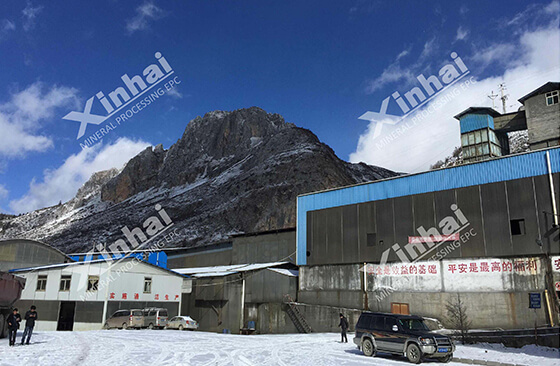
Pakistan 1500tpd copper processing plant
The mineral constitute of this project was simple. The metal minerals were mainly chalcopyrite, pyrite, etc. The non-metal minerals were quartz, chlorite, etc. Through the technology flow of grinding – one-stage roughing - two-stage scavenging - two-stage concentrating flotation – concentrates dewatering, the copper concentrates with grade 20.78% and recovery rate 90.05% could be recovered.
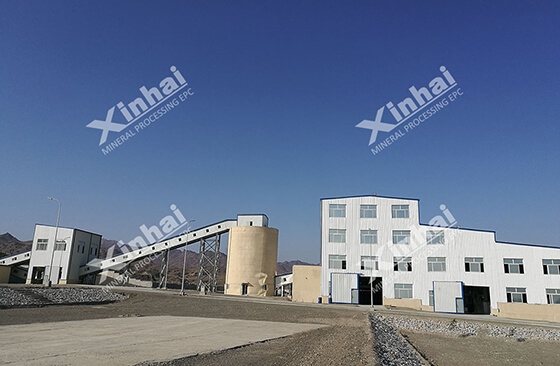
China 1000tpd copper processing plant
In the raw ore of this project, copper was 0.87%. The main metal minerals were pyrite, chalcopyrite, etc. The non-metal minerals were quartz, chlorite, etc. Copper was the main valuable element. It applied the processing flow of two-stage closed-circuit crushing and screening – one-stage closed-circuit grinding – copper flotation – sulfide flotation – concentrates dewatering – tailings dewatering. It obtained the copper concentrates with copper 22.89% and recovery rate 90.94%.
Myanmar 500tpd copper processing project
In the raw ore of this project, the main metal minerals were chalcopyrite, pyrite, etc. The copper grade was 3.74%. The sulfide grade was 10.73%. The iron grade was 13.71%. Copper, sulfur, and iron were the valuable elements. It recovered qualified concentrates with the processing flow of one-stage closed-circuit crushing and screening – closed-circuit grinding classification – one roughing - three scavenging - two concentrating flotation.
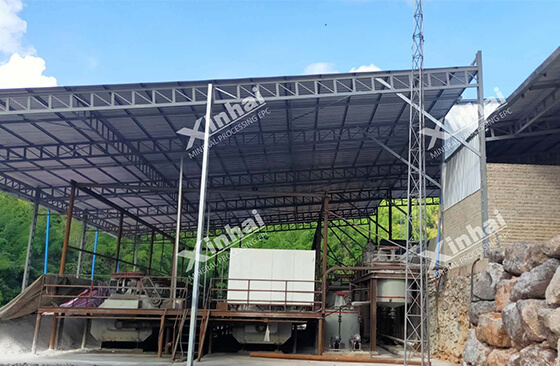
04To Wrap Up
BackIn summary, we can know that in the extraction of copper-bearing pyrite, it is more feasible to select the appropriate grinding medium and carry out the stage grinding stage separation method. In actual production, the above content can only be used as a reference and cannot be used blindly. Each beneficiation index should be determined according to the nature of the ore and the condition of the beneficiation plant.
You can consult the beneficiation equipment supplier with the test qualification of the beneficiation plant to avoid economic loss caused by the inappropriate beneficiation method.
If you have any questions about the extraction of copper from copper pyrite, please leave a message to communicate with us, or consult our online customer service.
 +86 183 3575 8886
+86 183 3575 8886 pinklaurabao@gmail.com
pinklaurabao@gmail.com




 Message
Message Chat Now
Chat Now


